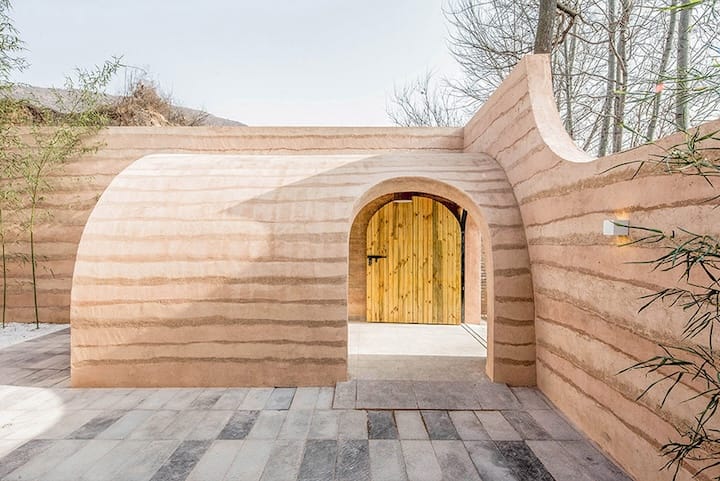Discover how rammed earth walls shape sustainable architecture by offering eco-friendly, durable, and energy-efficient building solutions.
Rammed earth walls are emerging as a powerful tool for sustainable architecture. This is an ancient construction technique; and also known for its simplicity and natural beauty. These walls are making a comeback as a modern solution for eco-friendly building. Here’s a closer look at what rammed earth walls are and how they impact sustainable architecture.

Rammed earth is a construction method that involves compacting layers of natural soil, clay, sand, and silt; between temporary formwork to create solid, load-bearing walls. The technique has been used for thousands of years and is now recognised for its minimal environmental impact and energy efficiency.
One of the main reasons rammed earth is considered a sustainable building material is its use of locally sourced, natural materials. This reduces the need for energy-intensive transportation and manufacturing processes associated with traditional building materials like concrete and steel. Additionally, rammed earth walls require very little water during construction, making it an attractive option in regions where water conservation is critical.
Energy Efficiency and Thermal Mass
One of the key benefits of rammed earth walls is their ability to act as a thermal mass. The walls absorb and store heat during the day, slowly releasing it at night, which helps to regulate indoor temperatures and reduce the need for artificial heating and cooling. This makes rammed earth an ideal choice for buildings in climates with significant temperature fluctuations.
The energy efficiency of rammed earth walls also extends beyond temperature regulation. Their durability means that less energy is needed for maintenance or repairs over time, contributing to a building’s overall sustainability.
Durability and Lifespan Rammed earth walls are extremely durable and can last for centuries if properly maintained. They are also fire-resistant, pest-resistant, and require minimal upkeep. This longevity makes them a cost-effective and environmentally friendly option for modern architecture, reducing the need for frequent renovations or rebuilds.
Aesthetic Appeal and Natural Beauty
Beyond their environmental benefits, rammed earth walls offer a unique aesthetic appeal. The natural colours and textures of the earth create stunning, visually appealing structures that blend harmoniously with the surrounding landscape. This makes rammed earth popular in projects where the integration of natural and built environments is essential.
Despite its benefits, rammed earth construction comes with challenges. The labor-intensive nature of the building process and the need for skilled workers can increase upfront costs. Additionally, rammed earth may not be suitable for areas with high humidity or heavy rainfall unless properly treated or reinforced.
Future Outlook
As the construction industry continues to shift toward more sustainable practices, rammed earth is likely to gain even more traction. Its ability to provide energy-efficient, low-carbon, and aesthetically pleasing solutions makes it an appealing choice for architects and builders looking to reduce the environmental impact of their projects.
Rammed earth has a resonance with the landscape and with nature’s processes. It’s a material that has been part of human history for thousands of years, and it remains relevant today because it offers something fundamental: durability, texture, insulation, and a deep connection to the land.
by Glenn Murcutt
Rammed earth walls are more than just a nod to ancient construction methods—they are a key player in the future of sustainable architecture. By combining durability, energy efficiency, and environmental responsibility, rammed earth offers a compelling solution for the challenges of modern building in a world increasingly focused on sustainability.




